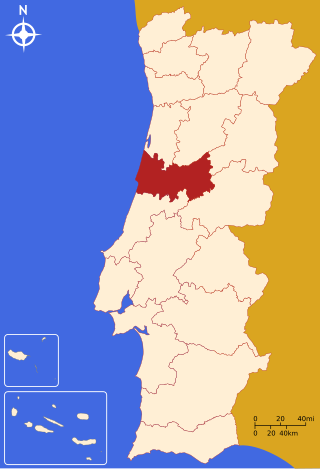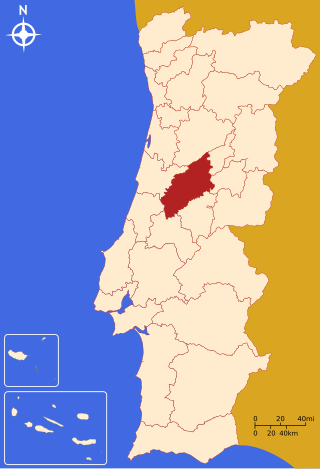
Coimbra is a city and a municipality in Portugal. The population of the municipality at the 2021 census was 140,796, in an area of 319.40 square kilometres (123.3 sq mi). The fourth-largest agglomerated urban area in Portugal after Lisbon, Porto, and Braga, it is the largest city of the district of Coimbra and the Centro Region. About 460,000 people live in the Região de Coimbra, comprising 19 municipalities and extending into an area of 4,336 square kilometres (1,674 sq mi).

Corvo Island, literally the Island of the Crow, is the smallest and the northernmost island of the Azores archipelago and the northernmost in Macaronesia. It has a population of approximately 384 inhabitants making it the smallest single municipality in the Azores and in Portugal. The island lies on the North American Plate.

The oldest known book on Portuguese cuisine, entitled Livro de Cozinha da Infanta D. Maria de Portugal, from the 16th century, describes many popular dishes of meat, fish, poultry and others.

Coimbra District is located in the Centro Region, Portugal. The district capital is the city of Coimbra.

Lousã is a town and municipality in the district of Coimbra, in the central part of Portugal. The population in 2011 was 17,604, in an area of 138.40 km2.

Miranda do Corvo is a town and a municipality in the Portuguese district of Coimbra, with an area of 126.38 square kilometres (48.80 sq mi) and 2011 population of 13,098 inhabitants.

Vila Nova de Poiares is a municipality in the Coimbra district, in Portugal. The population in 2011 was 7,281, in an area of 84.45 km².

Sabrosa is a municipality in the district of Vila Real in northern Portugal. The population in 2011 was 6,361, in an area of 156.92 km².

Beira Litoral is a former province (província) of Portugal, formally instituted in an administrative reform of 1936. It was abolished with the 1976 Constitution of Portugal.

Pinhal Interior Norte is a former Portuguese subregion, in Centro Region, Portugal. It was abolished at the January 2015 NUTS 3 revision. The principal and most populous town is Lousã. The only city is Oliveira do Hospital.

Ramal da Lousã is a railway line which connects the stations of Coimbra-B, on the Linha do Norte, and Coimbra, in Portugal. It was opened by the Companhia Real dos Caminhos de Ferro Portugueses, under the name Ramal de Coimbra, on 18 October 1885, and was extended to Lousã on 16 December 1906, and to Serpins on 10 August 1930.
Kissuto rombo is a traditional meat dish originating from Angola. The dish is prepared with roasted goat meat rubbed with a combination of garlic and lemon juice.

Meia-desfeita is a Portuguese dish, typically from Lisbon. It consists of cod (Bacalhau), cooked with chickpeas. It can be seasoned with onions and garlic sautéed in olive oil, parsley, paprika and vinegar, among other possible spices, and may or may not be finished in the oven.












